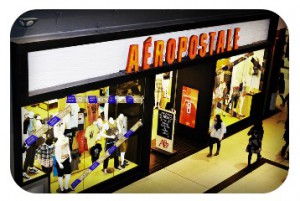 In the 2000s, clothing brands like Abercrombie & Fitch, American Eagle and Aeropostale were kings of the mall. These retailers rose to prominence by making preppy clothes with large logos that broadcast a certain prestige to the world. After all, teenage customers wanted to make sure everyone knew that they shopped at cool stores. Companies made this message easy to receive by placing an enormous emphasis on branding, thus making the logo even more important than the design of their clothes.
In the 2000s, clothing brands like Abercrombie & Fitch, American Eagle and Aeropostale were kings of the mall. These retailers rose to prominence by making preppy clothes with large logos that broadcast a certain prestige to the world. After all, teenage customers wanted to make sure everyone knew that they shopped at cool stores. Companies made this message easy to receive by placing an enormous emphasis on branding, thus making the logo even more important than the design of their clothes.
While this model succeeded for more than a decade, consumer tastes started to change once the infinite possibilities of the Internet took over the popular imagination. With the wider world opened up to young customers, they became more interested in developing their own unique styles rather than conforming with established brands. As a result, the former heavyweights of mall fashion watched as their sales dropped significantly in the early 2010s. Abercrombie and American Eagle responded to the changes with massive rebranding efforts. Along with getting rid of all the logos, Abercrombie is now looking to appeal to older customers while American Eagle has placed jeans at the center of its new identity.
Aeropostale, meanwhile, stayed the course with the same business plan they used for nearly two decades. “The teenager today wants to fit in,” said CEO Julian Geiger in a message to analysts two years ago. “They want to fit in by wearing things that make them feel safe. If there’s a brand promise to Aéropostale, it’s that the teenager can wear our clothes, go to school, and not be teased or made fun of the way they look.” What Geiger failed to understand, however, was that today’s teens are more likely to be ridiculed if they wear recognizable brands rather than something unique. Retailers like H&M and TJ Maxx have made fortunes off this concept by selling logoless clothing for cheap. Aeropostale, on the other hand, hoped to continue making money by charging a premium for its branding. Their gamble failed big as the company filed for bankruptcy in May. A buyout from a consortium of mall owners may save the brand, but in the world of fashion nothing is guaranteed.
Questions:
- Why didn’t Aeropostale follow the lead of its competitors and depend less on branding?
- Will teenage consumers continue to look for uniqueness in their clothing or could they eventually be won over with logos again?
Source: Kim Bhasin, “Rebel Teens Are Killing America’s Clothing Giants,” Bloomberg BusinessWeek, October 3, 2016. Photo by Bargainmoose.
